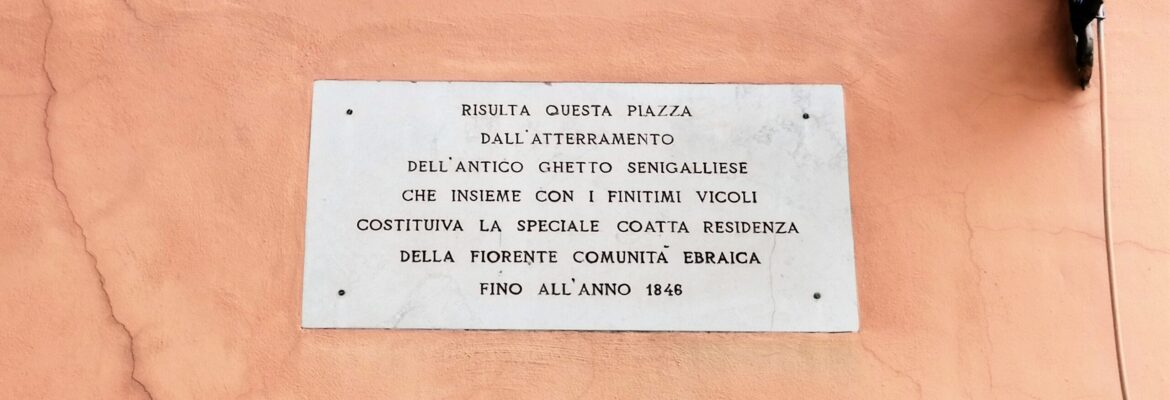The first direct evidence of Jewish presence in Senigallia dates back to the first half of the 15th Century; it is likely, however, that some Jews had already settled there in the previous century, attracted by the annual Maddalena Fair. Later, Duke Sigismund Malatesta promoted new immigration for the purpose of boosting commercial development in the city. The first restrictions on Jewish freedom began after the city passed under the rule of the Della Rovere family (1471), followed in 1508 by annexation to the Duchy of Urbino. The measures enforced concentrated mainly on everyday life, although the Jews were still allowed to live in the city. In 1631 Duke Francesco Maria II died without male heirs, and consequently the Duchy devolved to the Papal States. Shortly afterwards, ghettos were instituted in the cities of Pesaro, Senigallia and Urbino, to which also the Jews from the surrounding towns were forced to move. They were later made to wear a distinguishing mark on their clothing.
The area of reclusion extended over four blocks, comprising the modern-day streets of Via Arsilli, Via Marzi, Via Gherardi and Corso II Giugno. Four gates, one at either end, sealed off the two inner streets, which today are both named Via dei Commercianti. At the intersection between them stands the synagogue, which was moved here because the one used previously was outside the perimeter of the ghetto.
A brief interval of freedom brought by the French occupation was followed In 1799 by episodes of violence, destruction and looting of the ghetto, in which thirteen people were killed and others were injured. Many Jews fled, but in 1801 they were forced to reinstitute the ghetto. Forced residence was repealed in 1848, but social equality came only in 1860 with the Unification of Italy.
The ghetto area has undergone numerous changes since the late 19th Century, and only a few buildings, including the synagogue, have retained some of their original appearance.
Via dei Commercianti, between Via Arsilli, Via Marzi, Via Gherardi and Corso II Giugno

